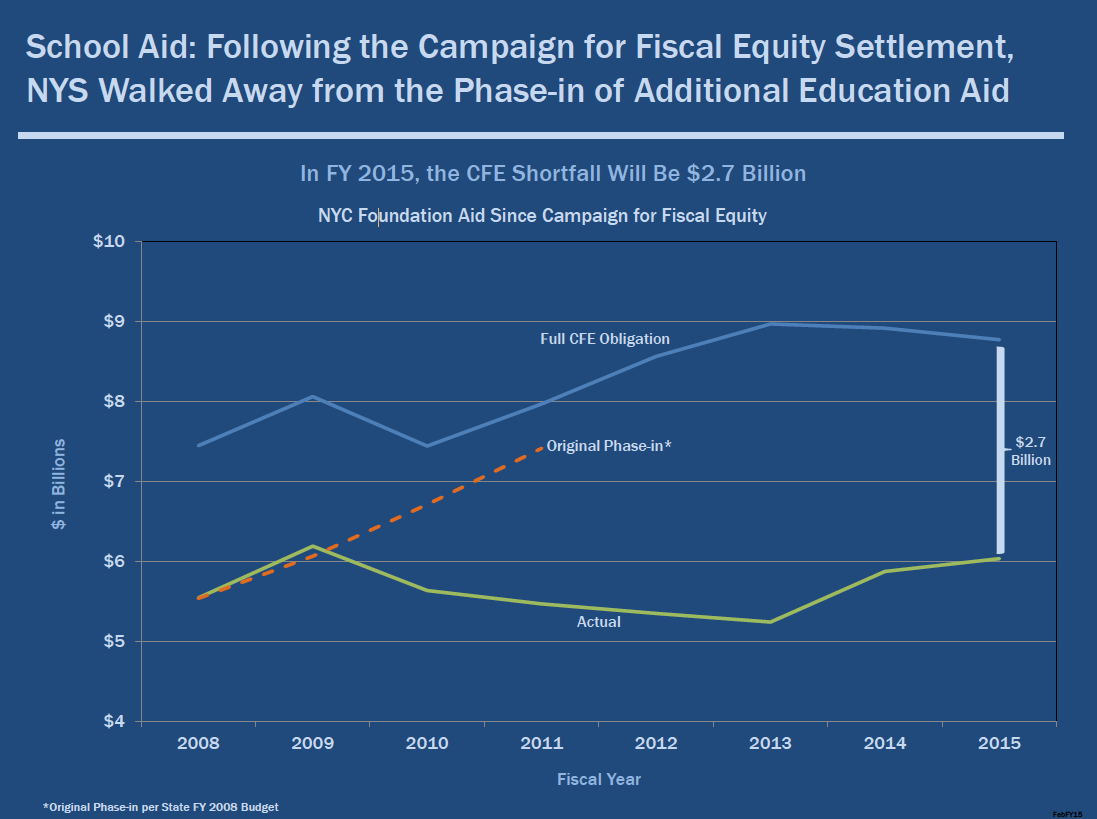Feb. 20, 2014 — New York’s Governor Andrew Cuomo’s proposal for $2 billion in tax cuts has already generated some skepticism because, as an article in The New York Times reported, the governor has left out a “big caveat.” The proposed cut is premised on the notion that New York State has a surplus to spend. But a “magic footnote” explains that the surplus will only “materialize if the governor persuades lawmakers to approve big cuts to planned increases in spending in future budgets.”
The governor has also tried at every turn to undercut New York City Mayor Bill de Blasio’s plan to raise taxes modestly on the wealthiest City residents. Leaving aside the gratuitous de Blasio bashing that the governor is now engaging in, the governor’s position depends ultimately on the idea that the state has enough money in the bank: “Why do you need a tax for a service we’re going to fully fund?”
But what if the governor’s assertion of fiscal good health depends in significant measure on the state continuing to fail to meet a constitutionally mandated obligation to fund a basic and sound education for children throughout New York State?
The issue emerged starkly from one element of the preliminary budget presentation made by Mayor de Blasio last week (depicted in this link and at the bottom of this page). According to that presentation, New York State is now providing $2.7 billion a year less in funding than that which has been constitutionally mandated by New York State’s highest court.
If that’s true — and leaving aside any money necessary to “catch up” for years of underfunding — closing the education funding gap would clearly outstrip the money that the governor claims is available both for tax cutting and pre-K funding.
It is assuredly the case that New York’s Court of Appeals ruled in 2003 in a case brought by the Campaign for Fiscal Equity that, because of inadequate funding for their public schools, children in New York City “are not receiving the constitutionally-mandated opportunity for a sound basic education.” That ruling was made concrete in 006 when the court, in follow-up proceedings, required the state to come up with substantial additional funding for New York City schools.
In 2007, the New York State Legislature enacted the Education Budget and Reform Act of 2007, which provided for additional funding to be phased in over the course of four years. After two years of providing the promised money, aid was first frozen at lower than promised levels (2009) and then cut substantially thereafter.
The basic factual questions for journalists to explore are:
(1) Does the governor acknowledge that the state constitution, as interpreted by the state’s highest court, required additional funding to New York City schools so that the state would begin to provide the “constitutionally-mandated opportunity for a sound public education”?
(2) What is the level of additional funding required?
(3) Has the state been providing that level of funding?
(4) Do the governor’s budget proposals account for meeting 100 percent of constitutionally mandated additional costs?
(5) If not, how is it fiscally prudent to enact a $2 billion tax cut now, and how can he say that money is available for state-funded pre-K?
There is, we know, the temptation to reduce the tax and pre-K issues to the dimension of how they “play” — both in a “who’s winning, Cuomo or de Blasio” way, and in a “what does this mean for the governor’s political ambitions” way.
But these seem to us to be very serious issues of substance. Is the governor brazenly violating a state constitutional obligation? Are his budgetary statements a matter of reality or smoke and mirrors?
